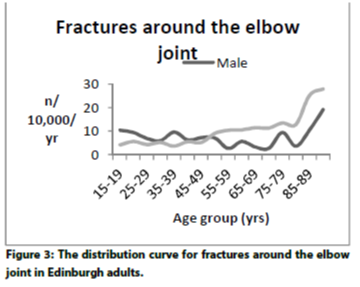Elbow Red Flags: Difference between revisions
No edit summary |
|||
| Line 18: | Line 18: | ||
==Malignancy== | ==Malignancy== | ||
Risk factors (theoretical) are age > 50 yrs, past history of cancer, unexplained weight loss, and malaise. The clinician should also be suspicious if the patient fails to improve or is non-responsive to therapy. Suspicious examination findings are palpable soft tissue or bony deformity, and bone tenderness. | |||
==Infection== | ==Infection== | ||
Revision as of 07:14, 21 June 2020
Introduction
Red flag conditions to exclude:
- fractures,
- tumours,
- infections,
- inflammatory diseases, and
- visceral diseases.
Red flag conditions are rare in the elbow.
Fractures
- Is there a history of major trauma such as a fall directly on to the elbow / MVA / high speed accidents
- Is there a history of minor trauma in an individual with risk factors for osteoporosis. 11% of osteoporotic fractures involve the humerus, mostly surgical neck.
Elbow fractures make up 10% of all upper limb fractures, and 6% of all adult fractures. The incidence is 7.4 per 10,000, and is slightly higher in woman at 7.4 compared to 7.1 for men. There is an association between social deprivation and increased proximal forearm elbow fractures [1]
Malignancy
Risk factors (theoretical) are age > 50 yrs, past history of cancer, unexplained weight loss, and malaise. The clinician should also be suspicious if the patient fails to improve or is non-responsive to therapy. Suspicious examination findings are palpable soft tissue or bony deformity, and bone tenderness.
Infection
Inflammatory Arthropathies
Referred Pain and Visceral Diseases
Recommendations
In a patient presenting with elbow pain,
Fractures should be considered
- in a history of major trauma
- minor trauma with a background of osteoporosis
Malignancy should be considered
- Palpable mass
- History of cancer or systemic features of cancer
- No other cause found or failure to improve
Infection should be considered
- Systemic features of infection
- Local features of infection
- Bone tenderness
- History of interventional procedures
References
- ↑ Aiken SA et al. The epidemiology of fractures around the elbow joint. Elective Medicine Journal. 2014: 2(3): 189 – 194


